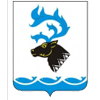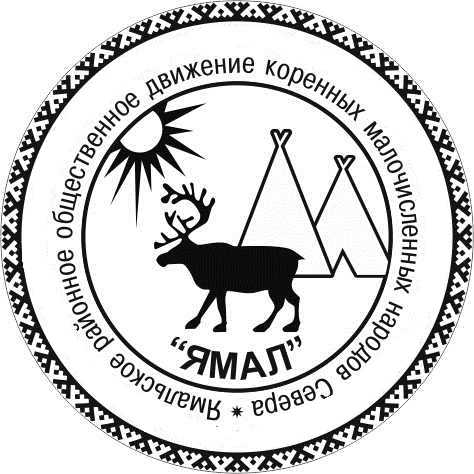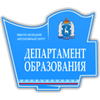On July 15th we arrived at our 30th encampment since the beginning of our journey: N 70º10'21,0'' E 068º09'27,8''. Linear distance from the last encampment - about 4,9 kms. This time during kaslanie our argishes crossed the underground gas pipe line Bovanenkovo-Uhta. On the surface there are signs and gas pipe line looks just like low clayey banks.
Two gas pipe lines Bovanenkovo-Uhta:
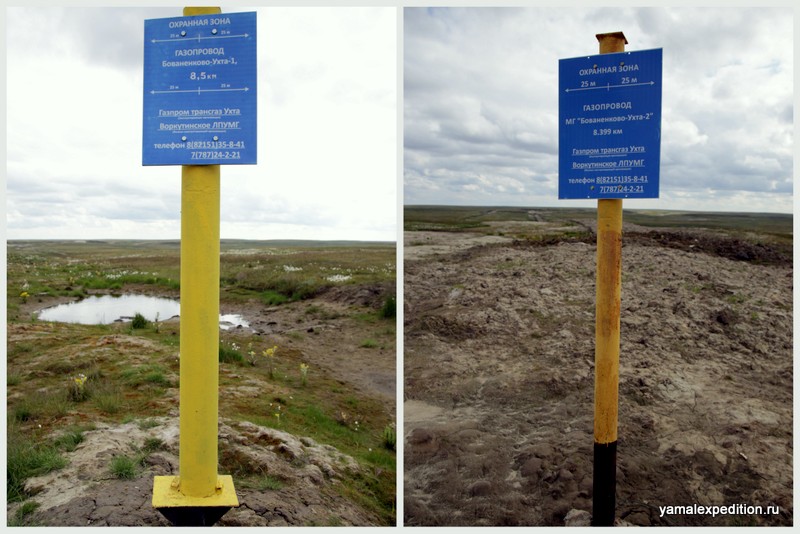
There is a disused quarry near the gas pipe line, all covered by grass. Its geographical coordinates: N 70º11'16,9'', E 068º13'17,1''
Our new encampment is 8 kms away from the workers settlement Lengazspezstroy (Lengaz or "zero kilometer" - Bovanenkovo-Uhta gas pipe line starts here). Reindeer herders who move with their herds near this area, buy fresh bread in Lengaz canteen and visit local shop for other purchases. Security quards on the gates told us that this summer reindeer herders have visited this settlement ten times - all visits are fixed down in the special visit journal. For one more time we noticed that shift workers in tundra are not very interested in knowing more about local tundra inhabitants: in the journal we haven't found even one correctly written Nenets family name (and as you might notice there are not many of them at all).
(please press on "Читать полностью")
While our neighbors riched the settlement on snowmobile, or teams, we decided to walk. Walking constantly accompanied by mosquitos can't be called pleasant, but we've got something to balance at the end. We've met a friend of Yaroslav Hudi and countryman of Alexandra from Tatarstan republic - Mars. Mars is one of a few shift workers who are sincerely interested and concerned about reindeer herders. And we thank Mars for wonderful coffee with cookies.
Lengazspezstroy settelment's geographical coordinates: N 70º14'41,8'' E 068º09'29,4''.
Tundra summer these July days was full of unexpectantly high temperatures. Reindeers tortured by mosquitos and the heat, stayed close to chums, at the same place for long time, and liked to keep close together. Usually during such period one man from the group is keeping the leading watch, and other men join him to watch over the herd (Nenets "ты' тяхана мэ" – to stay at the back of reindeers). So they are not only helping the main watch, but also marking this year newborn's ears (Nenets "сую"). Each family has it's own marks on reindeers' ears and fur. Noticing own reindeer fawn, the herder throws his lasso, stopping the fawn and then marks its ears (cuts the ears). Before we found information in different sources that saami reindeer herders were giving particular emphasis to these marks. But here in Yamal we realized that for Nenets the marks have also a very important function. All neighbors know each other's marks, the marks are officially registered and without them the Nenets can not even sell the meat on the slaughter markets. There is a united and well known by the tundra inhabitants mark system. Below you can find the marks used by different families from our group:
Kostja Serotetto reindeers' mark:
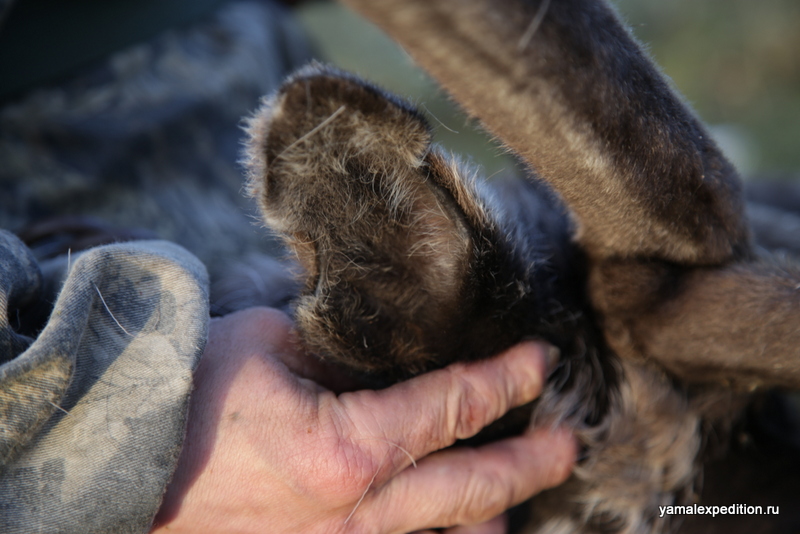
«Ears»: marks of four families of our group:

After a reindeer is completely casted its coat, one make a mark on the fur. A mark is cut on the fur on both sides without touching skin of an animal. Usually a youngest sun "inherites" marks from his father, because he become a herd's heritor and parent's guardian. Our host Kostja Serotetto is an example for the rule. Other sons in family have to ellaborate other marks, usually by changing mark of the father.
As reindeers have already casted their coats, soon herders will start to slaughter some animals to make fur clothes for winter time. In the spring time, as said among the herders, all reindeer are the same color, but in summer all are "ugly". After casting the coats the animals have changes and finally showed their real fur color.
Hasavako eating raw meat:
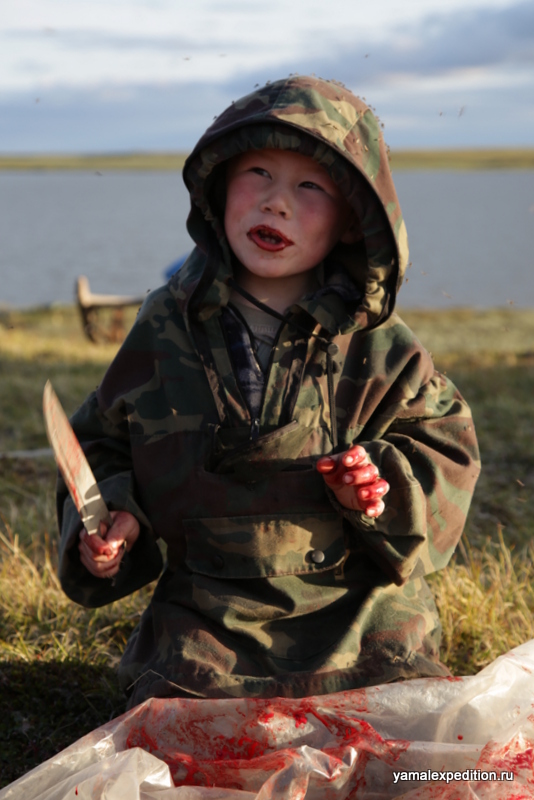
On July 21st we attived at our 31st stop:N 70º11'19,3'' E 068º04'09,1''. Linear distance from the last encampment - 3,8 kms. At this point the young Myangcha left the group, and Hasavako started to live at "our" side of the chum.
Besides mosquitos (the Nenets say there are not so many as usual of them this year - but we still don't agree) there are more tundra plug this time - it's blackflies (Nenets "ниберё") and even more dangerous for reindeers gad-flies. Nenets "Пилё(ю)'' иры" (month of gad-fliesм) - time from the end of July till the end of August.
There are two types of gad-flies here: one is spinal (Nents "ты' пилё") and nasal ("сяну' пилё"). The spinal one leave on the reindeer's fur its microscopic eggs, they enter reindeer's skin and during autumn and winder grow into bigger while larva. If you would touch the skin, you'd fill little knobbles - these are exactely larves parasitising on the animal's body. In May they start to get out of the skin to turn into mature insect. Starting from the beginning of the XX century reindeer herders are vaccinating the herd agaist gad-flies, but it's hard to make a full vaccination. Before vaccination reindeers partly died from the multiple larva-parasites. Practically on all the skins there were spurs (tiny holes) of larvas, and winter chum covers were leaking because of the same reason. Usual were "manual" ways to get of the larvas. Women and children spreaded white furs or fabrics near the herd (gad-flies like white color). After insects sat on the furs/fabrics, one started to beat them with the sticks or other objects. Now this occupation if more for children's fun.
Nasal gad-fly is even worse than spinal - it injects its future "next generation" in a reindeer's nose. Larvas live in an animal's throat, and become a real danger for unvaccinated reindeers. In older times herders put tobacco in reindeer's nose and mouth, letting the animal sneeze and get off the larvas.
There are also smoky fires made to get rid off the insects (Nenets пур''):
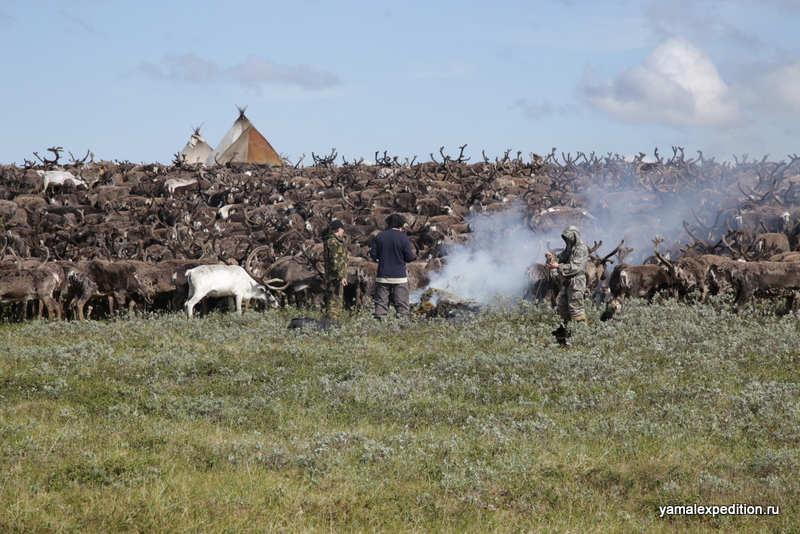
Avka (Nenets. ӈавка – «domestic» reindeer, grown up in a chum) escaping from mosquitos in Yaroslav and Maya's chum:
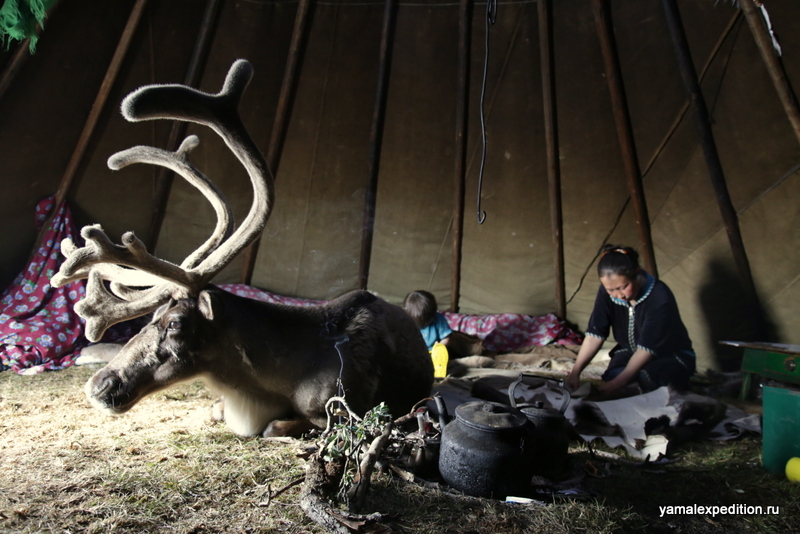
Women are continuing their summer activities like scuffing reindeer furs and making winter clothes. Alexandra tried scuffing and scuffed her first fur!
Albina is softening fur with a scythe (Nenets. "пидерць"):
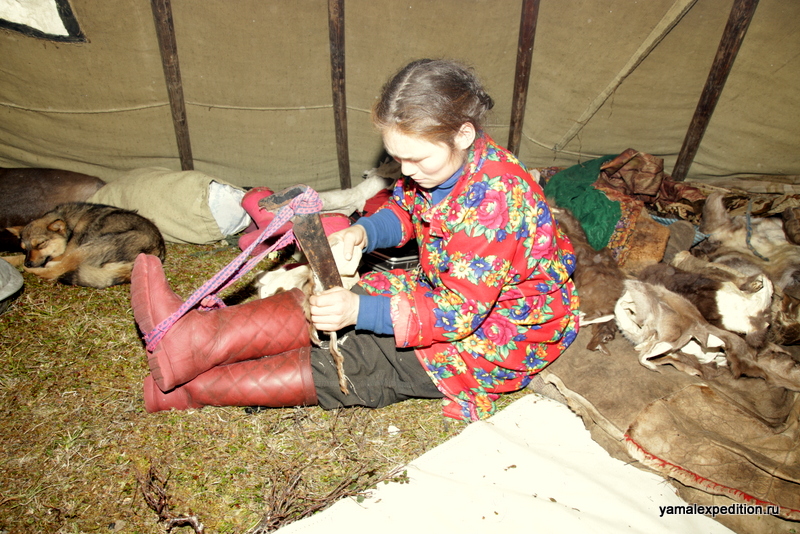
There are first mushrooms which appeared ahead of time (we saw russula and birch boletus). Reindeers are realy fond of the mushrooms: when there are a lot of them in tundra, reindeers are spreading in a wast area looking for their "favorite food". Some herders riding a team while watching the herd in the night. The Nenets themselves do not eat mushrooms - this so called "reindeer food" at all, and ask quite naive questions about mushrooms.
On July 27th we arrive at our 32nd stop: N 70º10'42,7'' E 067º56'46,1''. Linear distance from the 31st encampment was about 4,8 kms.
From the middle July we moved slighly in Eastern direction, around Lengaz-Bovanenkovo distance, and this time we moved straight to East. After parting with other families in our group (between 10th and 15th of August) Kostja is planning to move forward in Yumbi-yaha river direction, means in lower reaches of Mordy-yaha river direction, where is homechum of parents and brothers of Albina.
End of August - beginning of September we're going to spend in Salekhard. We plan to upload more fotos and videos. See you soon!

